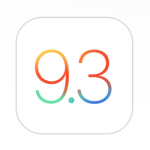
As a company, Apple are not known for being forthcoming about unreleased products or features. Famously, they publish no product ‘road map’. However, every now and then they share pre-release details about the next big thing that they are working on and yesterday it was time for the education-specific features in the upcoming iOS 9.3 update to grab some of the limelight.
I would say that most in the Mac Admin community had to pick their jaws up off the floor after the announcement that Apple would be bringing multi-user support to iPad. This feature, let alone all of the others, warrants mass excitement if you work in education and currently deploy iPad to students. I will go over the main points, starting with the one which we believe will have the largest impact:
Shared iPad
For the majority of schools that cannot afford to or are prohibited for other reasons from deploying an iPad to every child, this is A Big Deal. In our experience, the biggest challenge of deploying iPad in shared use environments is the issue of the user’s environment on the device. When little Raj comes along and picks up an iPad from the shared-use cart, he starts working in Pages and creates a lovely document all about photosynthesis. He works really hard for an hour and then puts the iPad back in the cart and goes off for playtime. After break, Jonny takes the same iPad from the cart and launches Pages to start his work on the planetary system. However, he first has to turn off bold text, zoomed display and VoiceOver (Raj is visually impaired). Jonny then works on his Pages document but “accidentally” deletes Raj’s work on photosynthesis (Jonny is a boy and boys do that kind of thing, just because). You can see where I’m going with this. Shared iPad completely personalises for multiple users what was originally designed to be a single-owner device. When a student logs into an iPad running 9.3, the whole environment is tied to that user. This means that any settings that are changed, documents that are created (or deleted!), etc are tied to that particular user and will follow him around when he logs in to another iPad. This is a real fundamental shift from how iPad currently works and I really hope it will encourage schools to use iPad much more as a content creation tool and not just as a device for ‘doing research on the Internet’.
The feature will require a minimum spec of an iPad Air 2 with 32GB or more of storage. Going forward, schools purchasing iPad will need to ensure that they opt for a model that meets the minimum capacity requirements if they wish to take advantage of Shared iPad (and who wouldn’t?). Another requirement will be a Mobile Device Management (MDM) solution that supports these new features. So far, most of the major players in the market have announced upcoming support.
As you might imagine, having multiple users log in to different iPads could potentially bring a network and Internet connection to its knees. A robust Wi-Fi system will be essential and, unless you have a 1Gb connection, you will probably want to deploy Caching Service to cache data onsite so that every time Raj logs into a different iPad it’s not having to go out to the Internet to download his 10GB iMovie project or 3GB iCloud Drive data.
Like everything Apple do, they have thought about the small details. When a teacher starts to allocate devices to students, a clever algorithm will allow the teacher to easily ensure that users receive the same iPad they were using last. This will cut down dramatically on the amount of data that has to be pulled down over the network, speeding up the login and general user experience.
Managed Apple IDs
Tim Cook quietly mentioned a year or two ago that the ability for schools to manage Apple IDs in some kind of limited way was ‘coming’. Rumours were building at the end of last year and it’s great to see that this feature has been announced. As the name implies, Managed Apple IDs (very much not to be shortened to MAIDs, I’m told) are Apple IDs that schools will be able to create and give to their students. There are some differences compared to a regular Apple ID and this makes them ideal for use in a shared environment (Shared iPad requires Managed Apple IDs). The main differences include:
- App Store & iTunes Store (users can browse but not purchase)
- No Apple Pay
- No Find My Friends
- FaceTime*
- iMessage*
- iCloud Backup*
- No Touch ID
* Can be enabled by the school if desired
Managed Apple IDs can be created manually, imported using a csv file or synthesised using data from a Management Information System (what Apple call an SIS – Student Information System).
Part two of this blog post will finish up by discussing the other two new features – Apple School Manager and the new Classroom app.
Stuart
Stuart is in charge of kitchen duties and makes a mean cup of coffee. He also holds the keys to Crossover’s Emergency Response Vehicle and will turn up on two wheels should your server catch fire.

Recent Comments